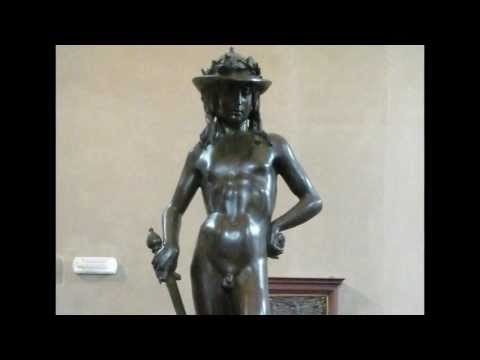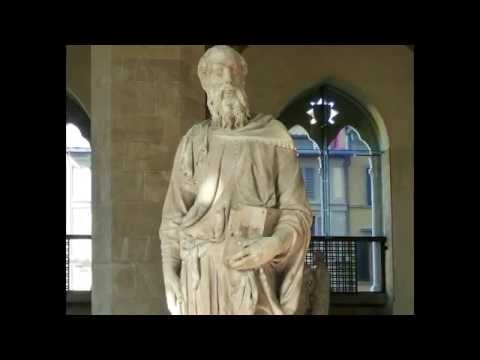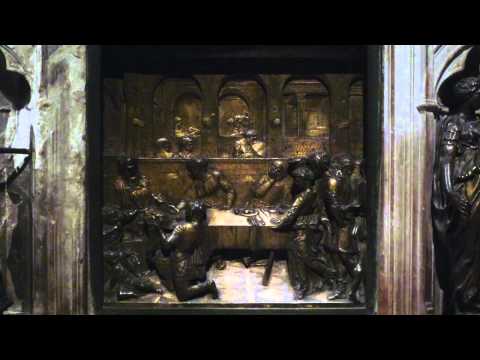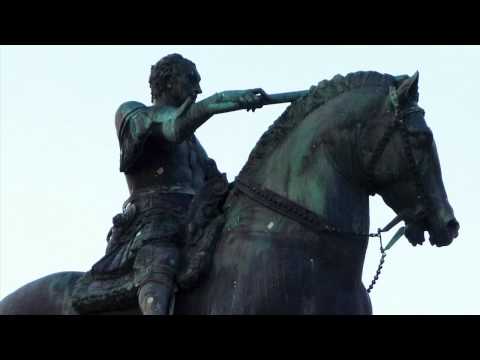4.9: Obras de Donatello
- Page ID
- 103023
La Dra. Beth Harris y el Dr. Steven Zucker brindan una descripción, perspectiva histórica y análisis de varias de las obras de Donatello: David, San Marcos, Fiesta de Herodes y Monumento Ecuestre de Gattamelata.
David
Donatello, David, bronce, finales de la década de 1420 a la década de 1460, probablemente la 1440 (Museo Nazionale del Bargello, Florencia)
San Marcos
Donatello, San Marcos, 1411—13, mármol, 93″ (236 cm), Orsanmichele, Florencia
Fiesta de Herodes
Donatello, Fiesta de Herodes, panel sobre la pila bautismal de la catedral de Siena, Siena, Italia, Bronce dorado, 1423—27.
Monumento Ecuestre de Gattamelata
Donatello, Monumento Ecuestre de Gattamelata (Erasmo da Narni), 1445—53, bronce, 12 pies, 2 pulgadas de alto, Piazza del Santo, Padua
Colaboradores
- Donatello, David. Autor: Dr. Steven Zucker y Dra. Beth Harris. Proporcionado por: Khan Academy. Ubicado en: www.khanacademy.org/humanidades/renacimiento-reformación/temprano-renaissance1/escultura-arquitectura-florencia/v/donatello-david-bronze-c-1440s. Licencia: CC BY-NC-SA: Atribución-NoComercial-CompartirIgual
- Donatello, San Marcos. Autor: Dr. Steven Zucker y Dra. Beth Harris. Proporcionado por: Khan Academy. Ubicado en: www.khanacademy.org/humanidades/renacimiento-reformación/temprano-renaissance1/escultura-arquitectura-florencia/v/donatello-st-mark-1411-13. Licencia: CC BY-NC-SA: Atribución-NoComercial-CompartirIgual
- Donatello, Fiesta de Herodes. Autor: Dr. Steven Zucker y Dra. Beth Harris. Proporcionado por: Khan Academy. Ubicado en: www.khanacademy.org/humanidades/renacimiento-reformación/temprano-renaissance1/escultura-arquitectura-florencia/v/donatello-festa-de-herod-1423-27. Licencia: CC BY-NC-SA: Atribución-NoComercial-CompartirIgual
- Donatello, Monumento Ecuestre de Gattamelata. Autor: Dra. Beth Harris y Dr. Steven Zucker. Proporcionado por: Khan Academy. Ubicado en: www.khanacademy.org/humanidades/renacimiento-reformación/renacimiento-temprano-renacio1/escultura-arquitectura-florencia/v/donatello-monumento-ecuestreo-de-gattamelata. Licencia: CC BY-NC-SA: Atribución-NoComercial-CompartirIgual





